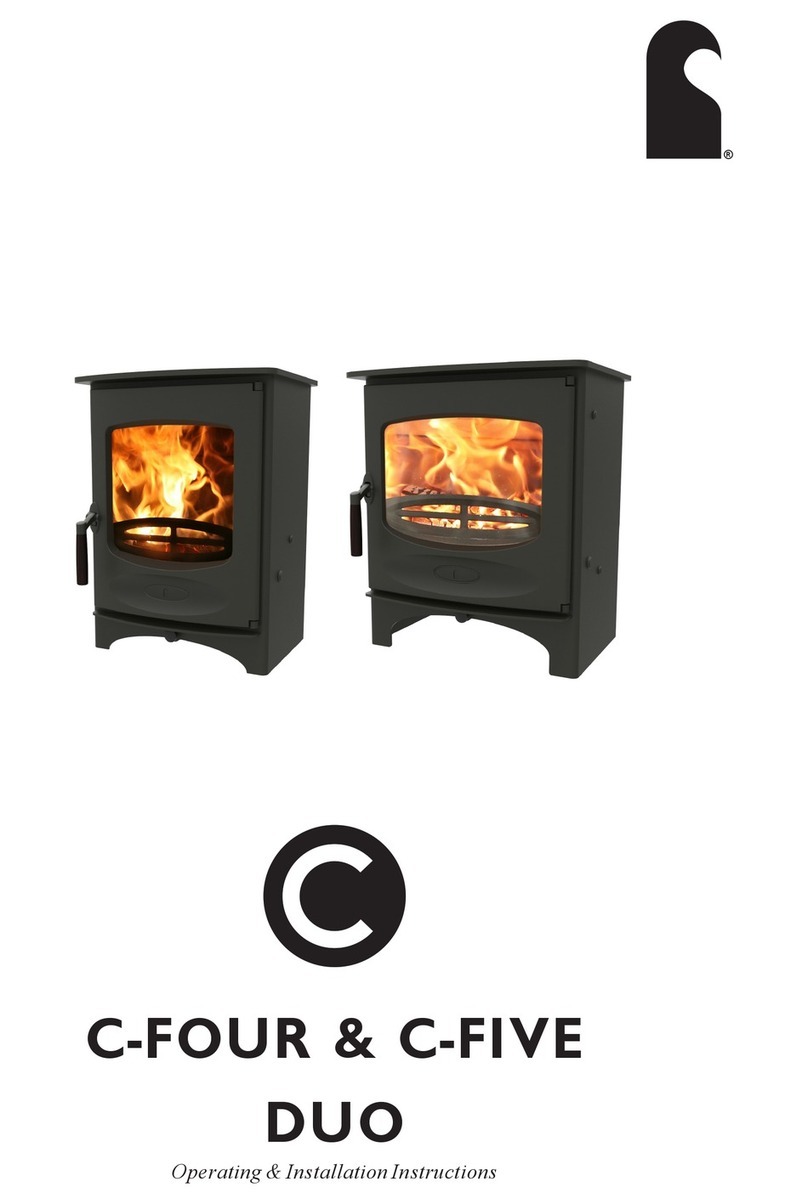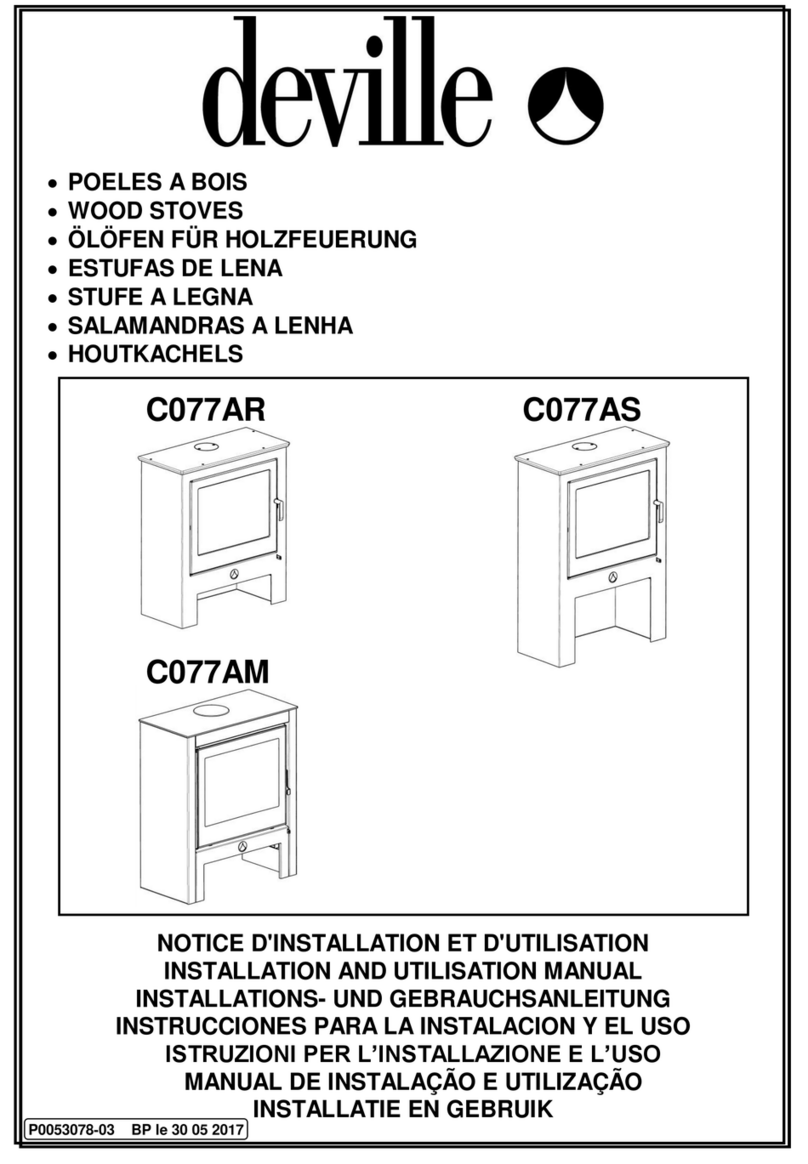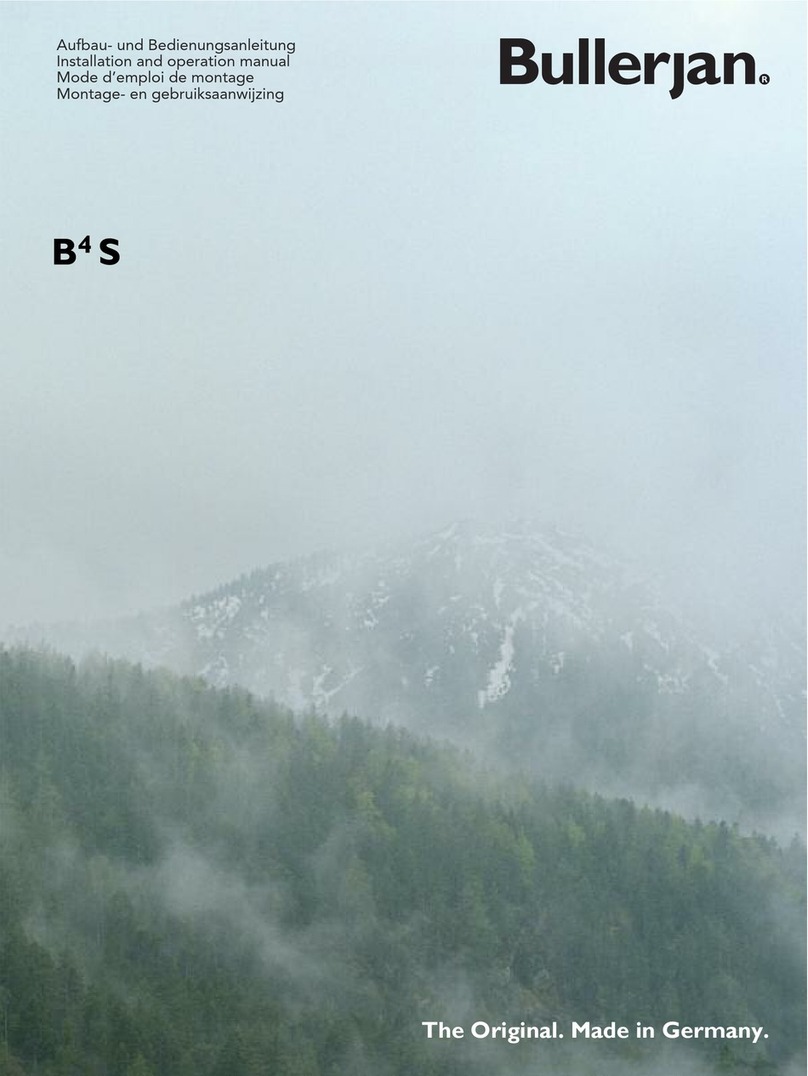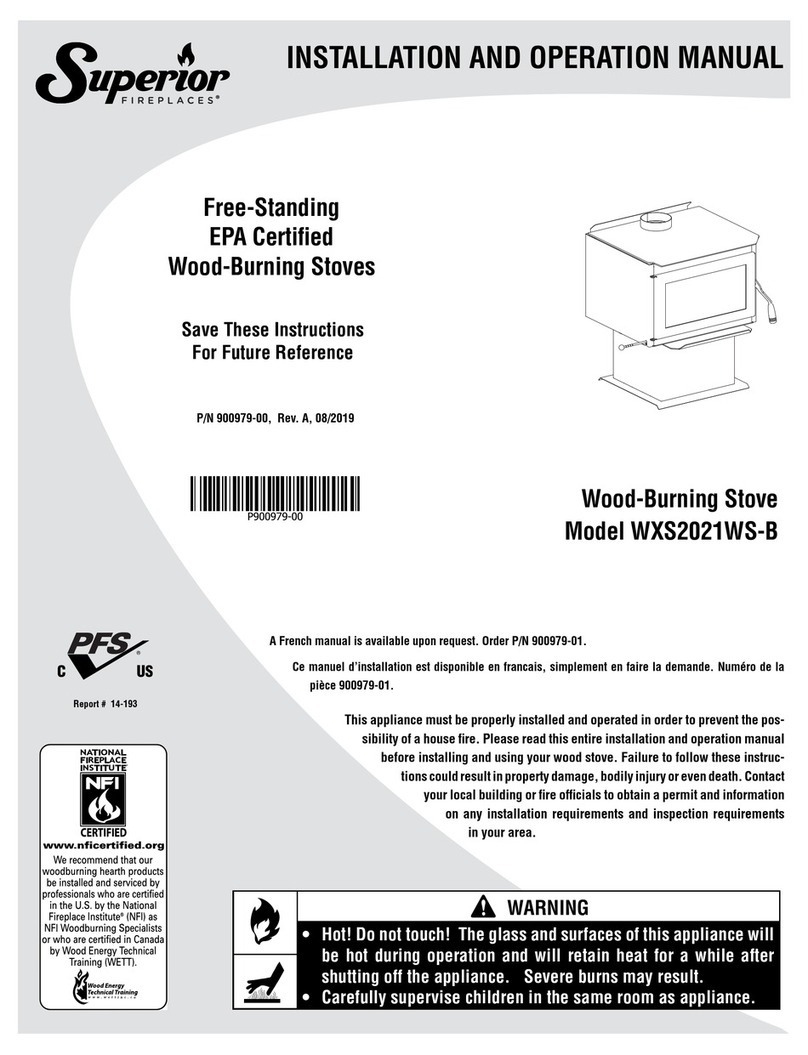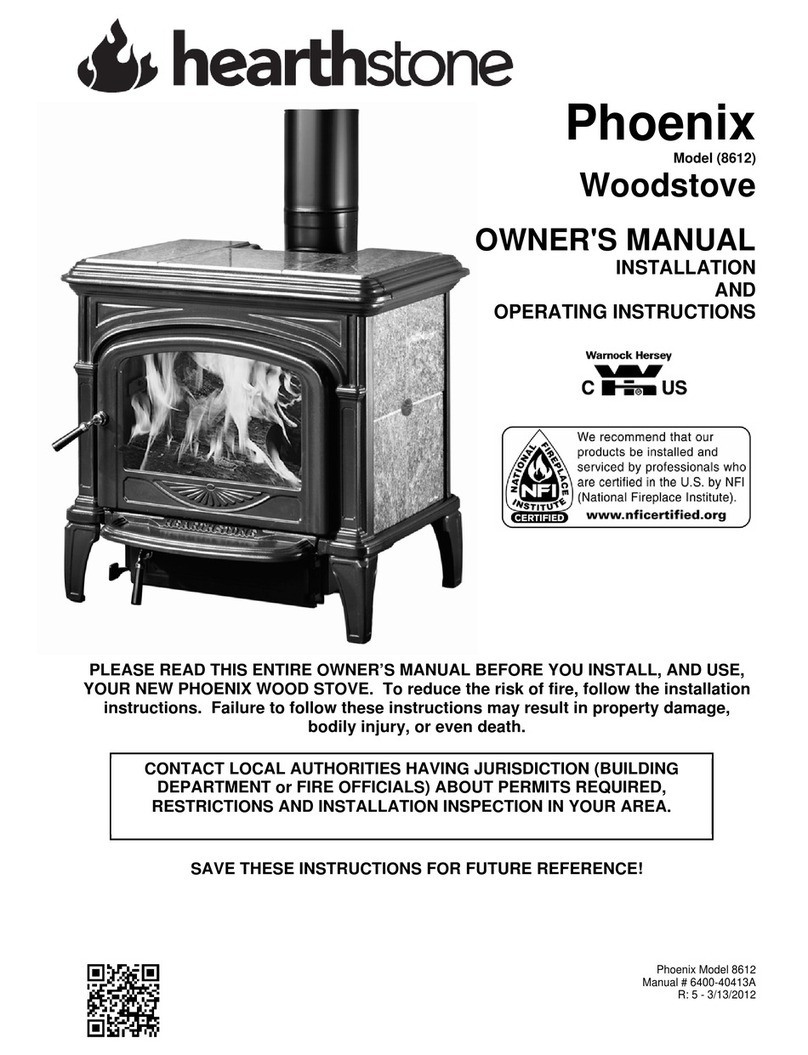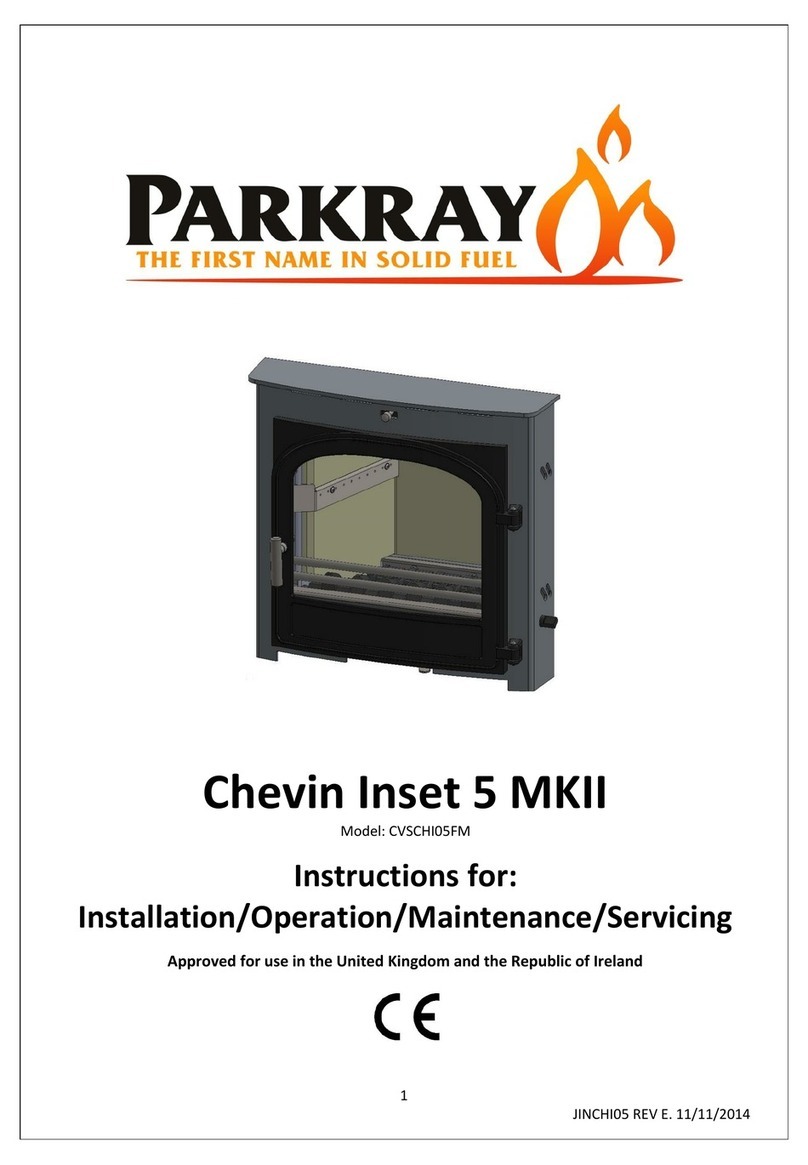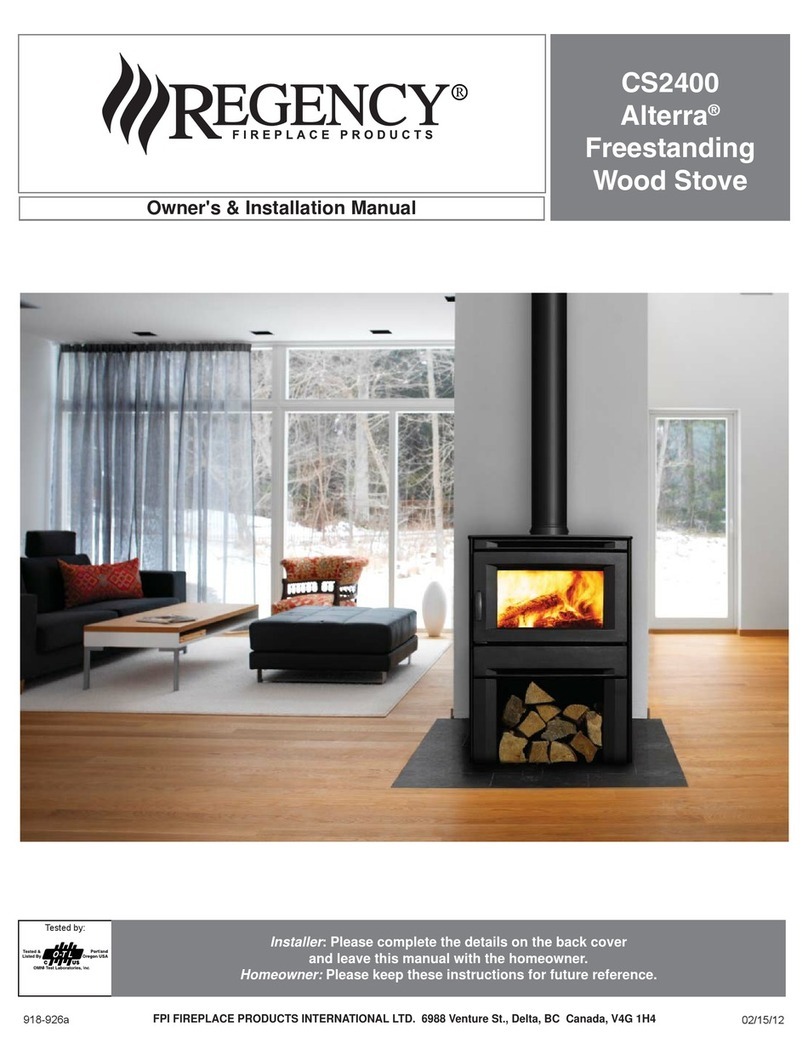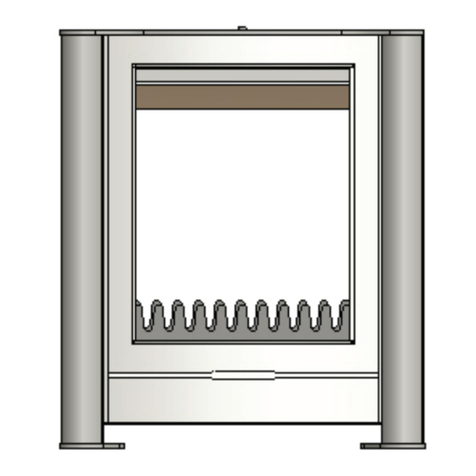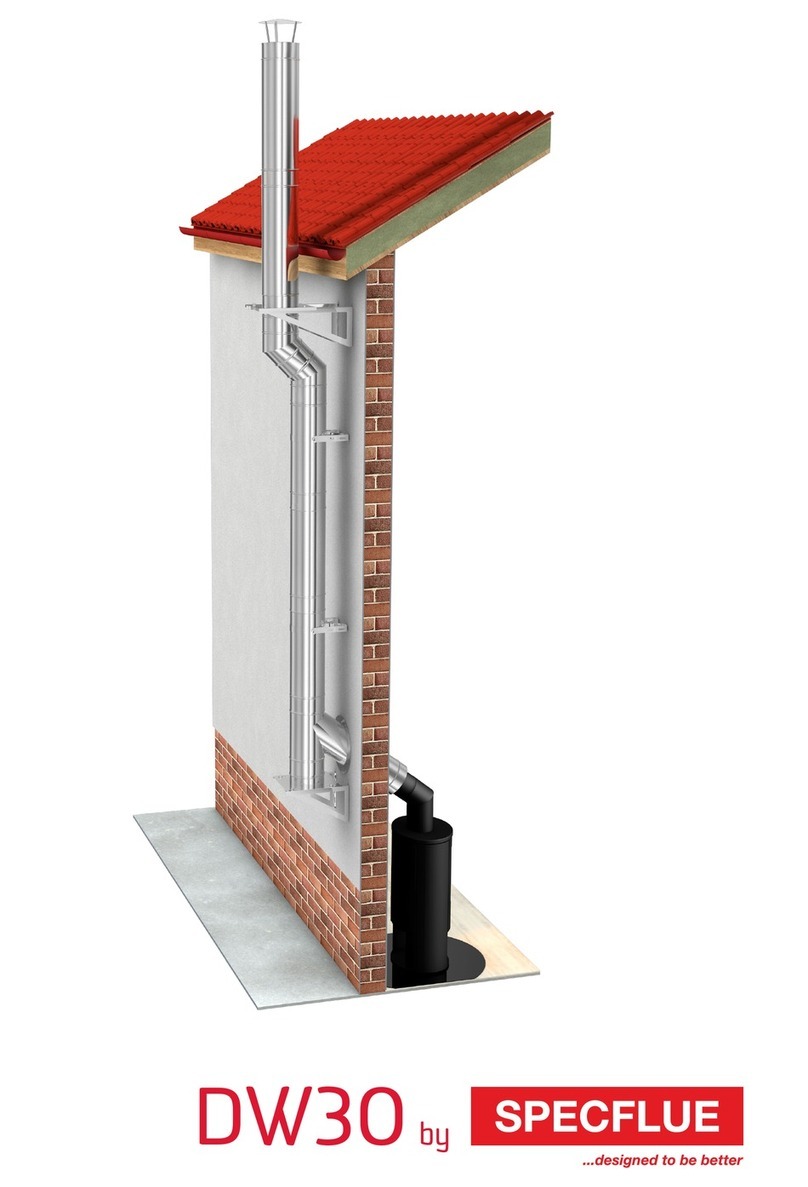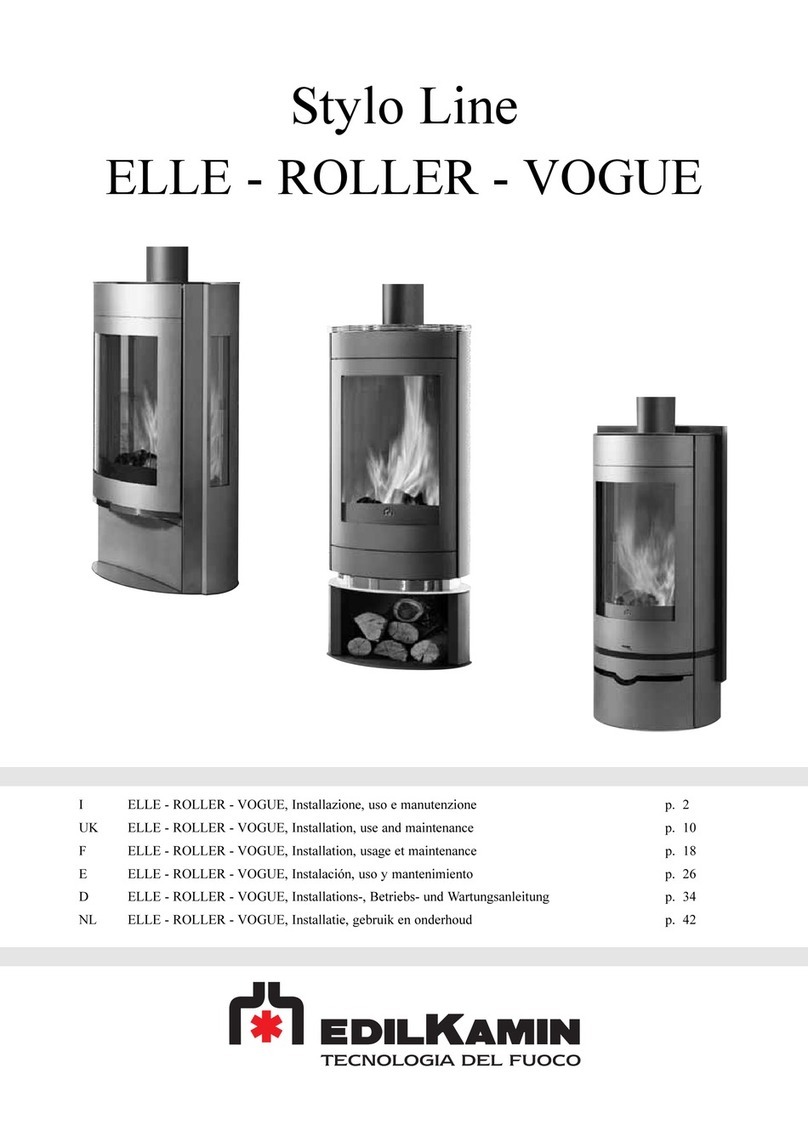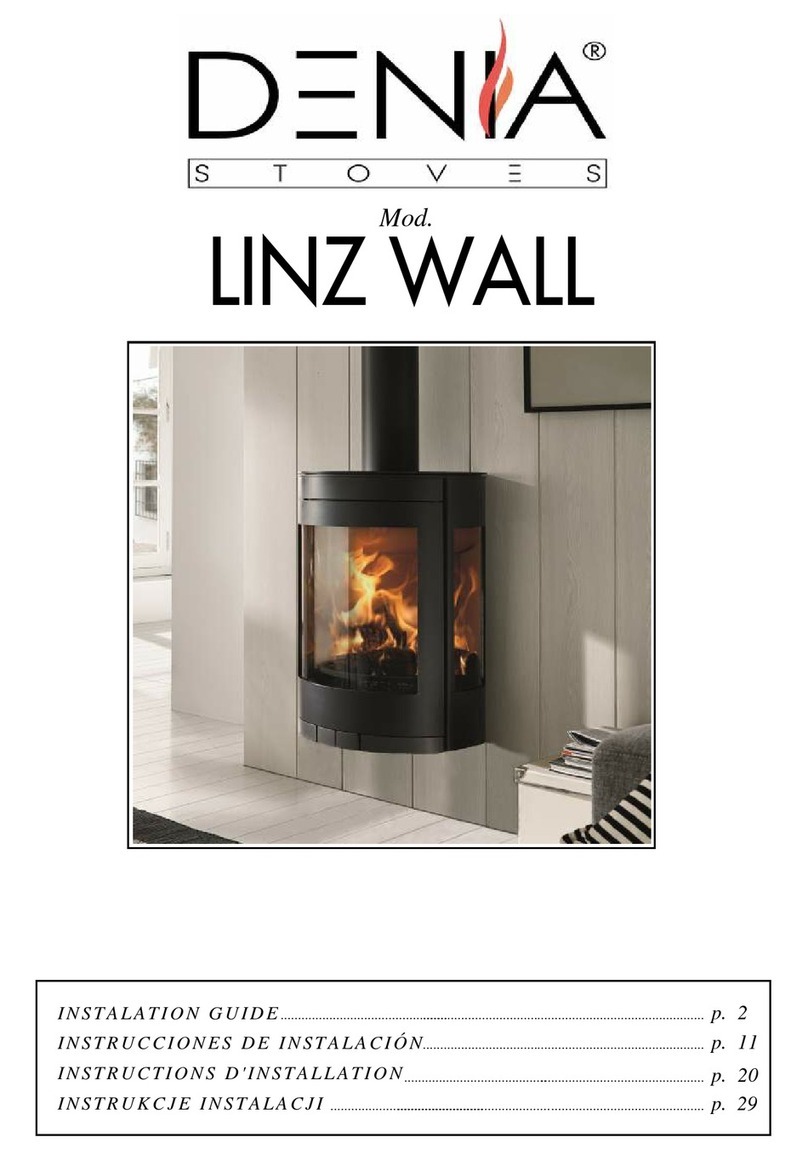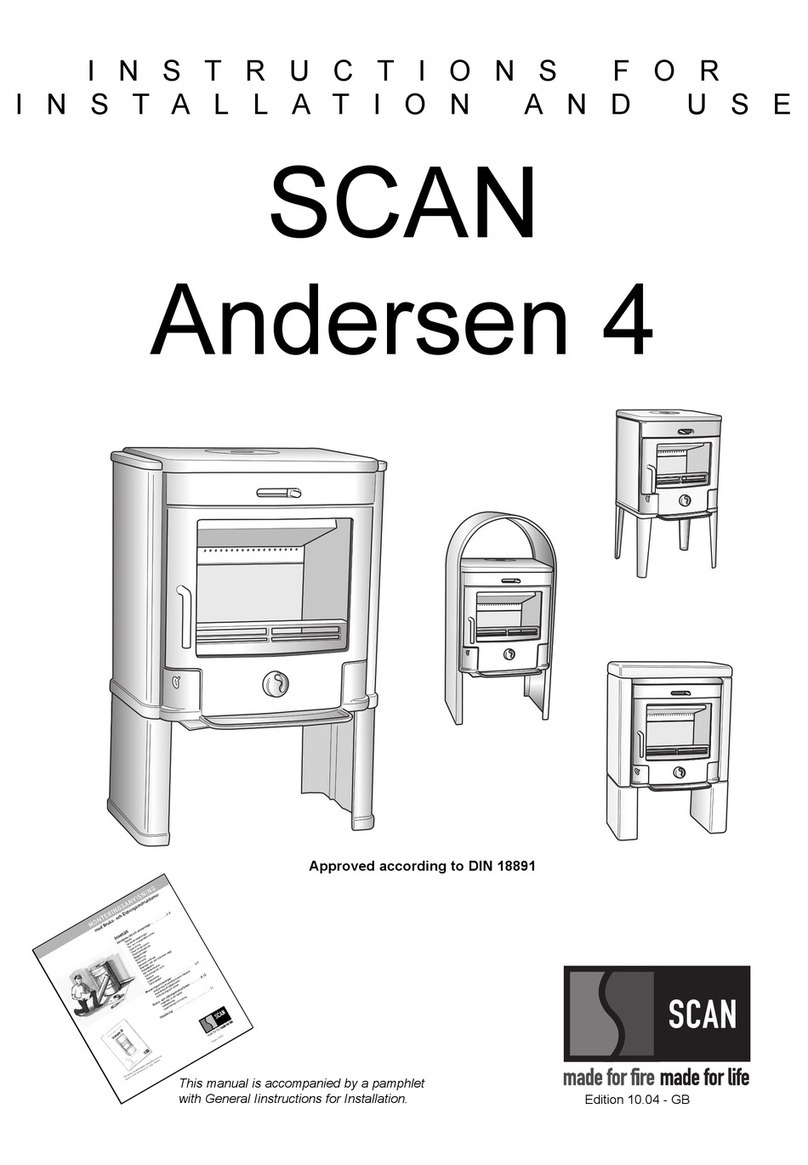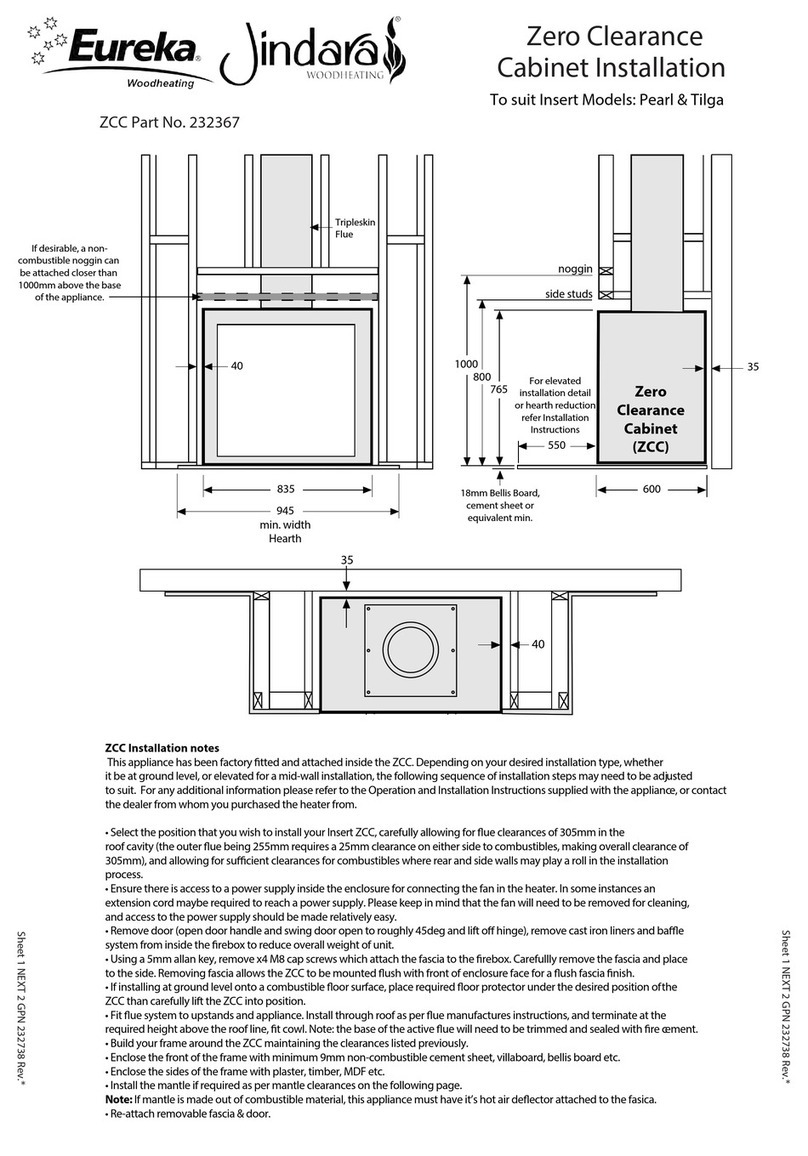
Installation and Operating Instructions for Gilcar & Devonshire Fresh Air Freestanding Woodburning Stoves Specue v1 - April 2019
Do not leave the door open: Operation with the door open can cause excess smoke. The appliance must not be operated
with the appliance door left open except as directed in the instructions.
Do not leave the air sliders completely open: Operation with the air slider permanently open can cause excess smoke.
The appliance must not be operated with air controls or dampers left open except as directed in the instructions.
SLUMBERING A STOVE
Whilst it may seem appealing, slumbering a stove at the end of an evening is not to be recommended. Not only is this
harmful to the environment due to the incomplete combustion of the fuel but there is a potential to create longer term
problems to the stove internal components which also includes the glass door panel and ue components. Incomplete
combustion of the fuel will lead to gas build up in the re chamber potentially including Sulphur, which under certain
conditions can start attacking these components. This practice WILL void all warranties.
SAFETY PRECAUTIONS
A risk of blowback and/or explosion can arise if too much dry wood is placed in the stove and burnt with insufcient
combustion air. This may result in the production of gaseous compounds which can ignite if the intake of primary and
secondary air is insufcient and the rebox temperature too low.
For wood burning it is an advantage always to leave some ash lying in the bottom of the combustion chamber. Take care
when emptying the ash pan, as cinders can continue to burn in the ash for long periods of time.
MAINTENANCE OF MATT BLACK PAINT FINISH
The surface of the stove has been treated with heat-resistant paint. The stove can be cleaned with a soft brush after it
has cooled down. Any damage to the surface in the form of chips or scratches can be repaired using touch-up paint,
which is available in spray cans. If the stove has become grey in colour due to overheating, touch-up paint of this kind
can be used to repaint the stove entirely. Alternatively the stove can be maintained with a traditional type of stove polish
of which there are several proprietary makes available. Do not use an aerosol spray anywhere near the stove when it is
either alight or still hot – allow it to cool down before respraying.
MAINTENANCE OF THE STOVE GLASS
Incorrect ring, for example using wet wood, or slow burning can result in the viewing window becoming covered in
soot. This soot can be easily and effectively removed by using a dry wiper glass cleaner, when the glass is cold. Burning
contaminated, incorrect solid fuels or fuels high in Sulphur may cause permanent damage to the glass, which is not
covered by any warranty.
OPERATIONAL PROBLEMS
In the event of smoke or malodorous fumes being produced, you must rst check to see whether the chimney is blocked.
The chimney must, of course, always provide the minimum draught necessary (12 Pa) to ensure that it is possible to
regulate the re. However, the chimney draught may also be affected by weather conditions. Both wind and temperature
can affect the performance of a chimney.
In cases where the wood burns too quickly, this may be due to excessive chimney draught. You should also check to
make sure that the door seal is intact. If the stove produces too little heat, this may be due to the fact that you are ring
with wet wood. A large proportion of the heat output will be used to dry the wood, resulting in both uneconomical heating
and an increased risk of soot and tar deposits forming in the chimney.
STANDING DOWN AT THE END OF THE SEASON
At the end of the burning season the stove should be prepared for the stand down period, this is to prevent corrosion
both in the stove and ue system.
The stove should be cleared of all ash, the bafe and ue ways cleared of soot and y ash and the chimney swept.
All air vents should be in the open position and it is recommended that the door is left ajar to ventilate the chimney.
This is the ideal time to check for parts that may need replacing and to lubricate door hinges and catches. Also it is
recommended that all screws holding the glass in place are removed and replaced with a high temperature lubricant such
page 5 of 12













